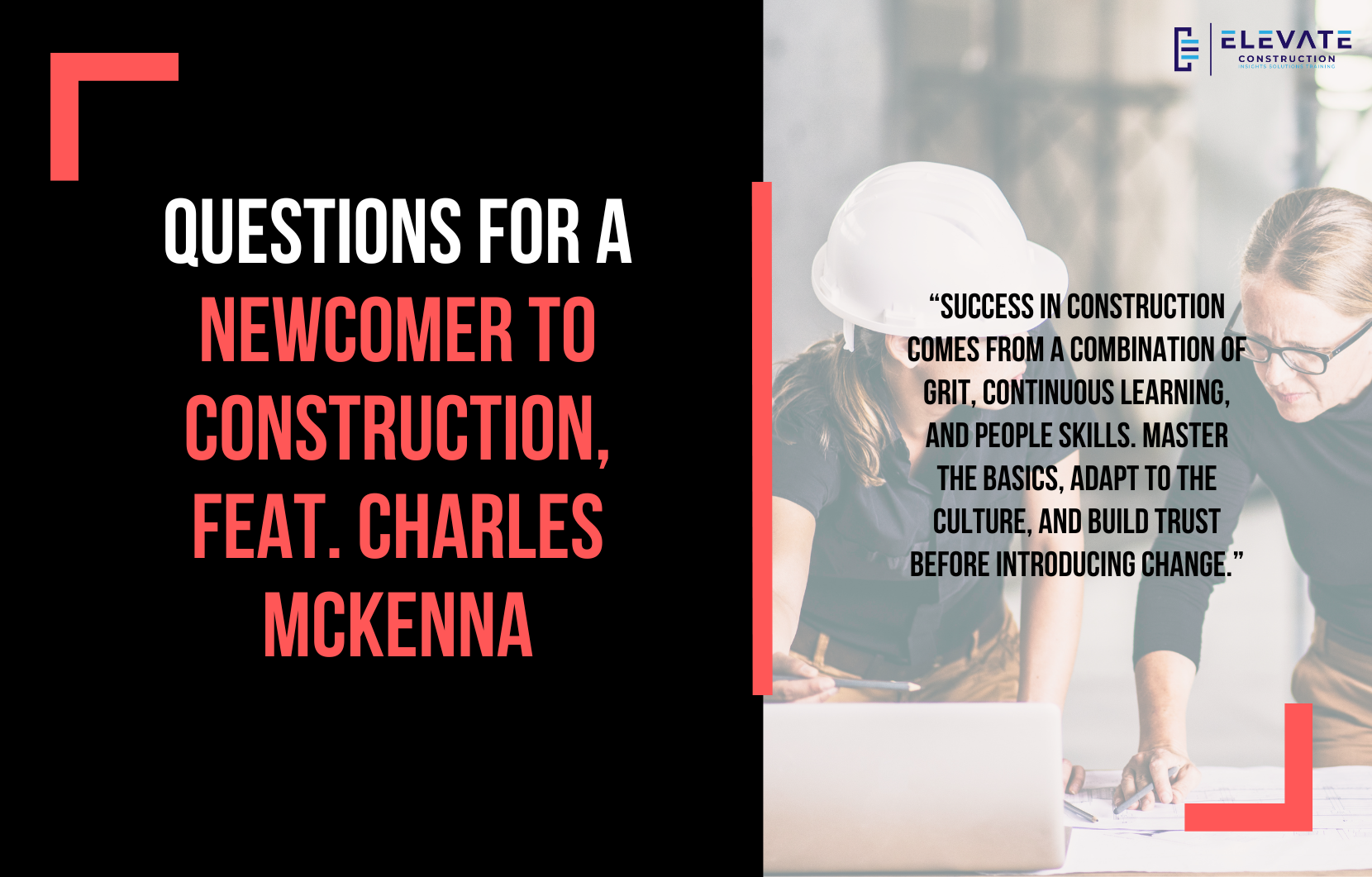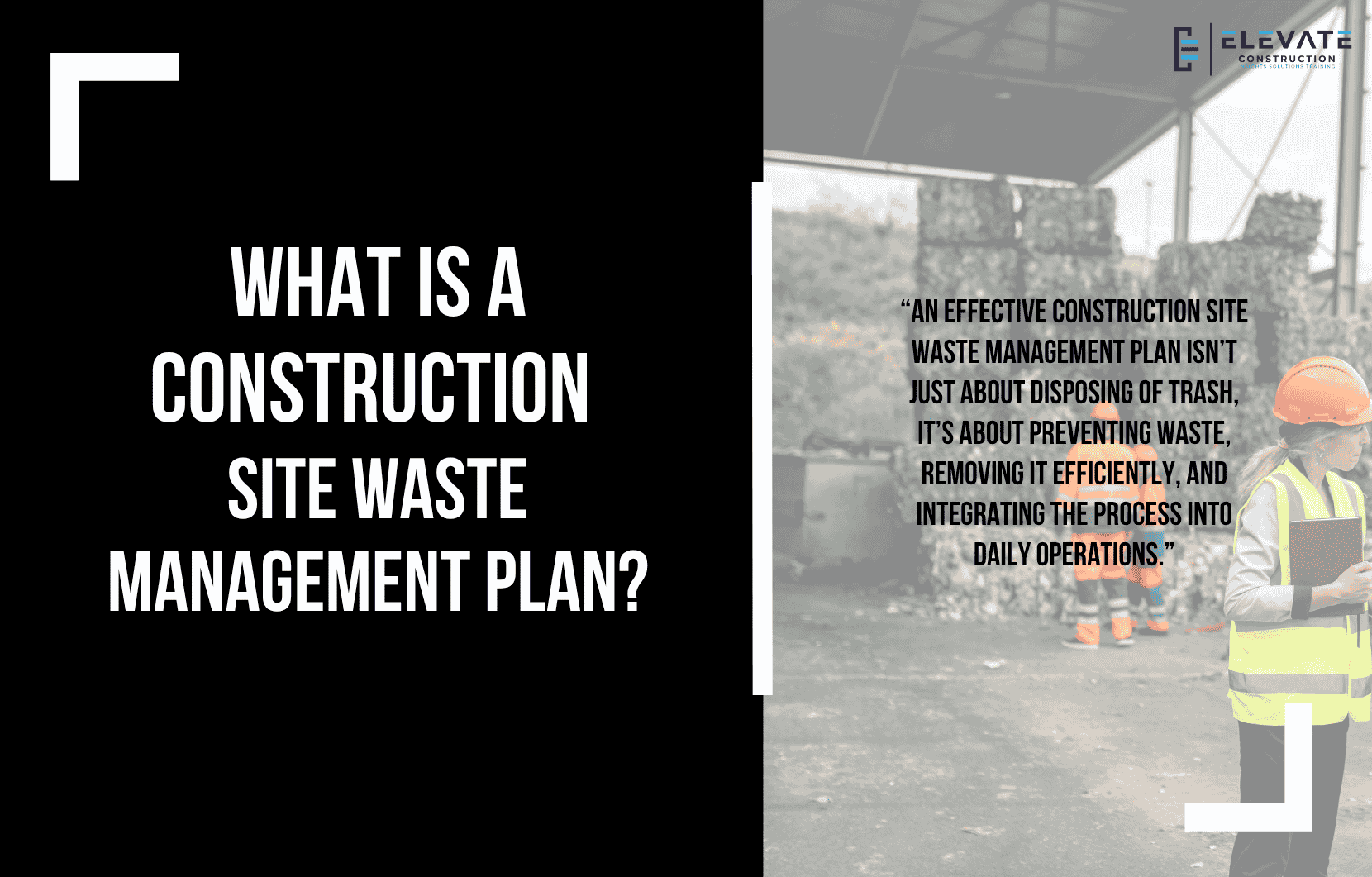When Standardization Stifles Innovation on the Jobsite
A listener recently sent in a great question:
“My company wants everything standardized. I created my own Canva-based weekly update doc for OAC and foreman meetings, but I’m reluctant to show it to management because it’s different. They want all our docs to look the same across projects. I love this company, but they’re very ‘if it’s not broken, don’t fix it.’ I’m not a status quo guy. If we’re not growing or getting better, what are we doing? Have you dealt with this before?”
I have, and I feel this one deeply.
The Danger of Over-Standardization
I’ve seen strong companies make weak decisions by over-standardizing. Sometimes it starts with a good intention, like brand consistency, but it ends with processes frozen in time. I’ve seen companies look the same 10–30 years later because standardization became a ceiling instead of a floor.
The worst part? Innovation dies, and people are turned into “yes” robots.
Our Rule at Elevate Construction
We have minimum standards, but no cap. You can always make it better.
That’s why our graphics, books, proposals, and templates keep evolving. Each new iteration builds on the last. Is it harder? Yes. Does it take more time to get used to changes? Absolutely. But it’s worth it.
What I’d Do in Your Shoes
I’d go to leadership and say:
“I created this tool. Can we format it so it’s on-brand and available for others to use, while still allowing me to use it on my project?”
That way, you’re respecting the company’s desire for consistency and keeping your ability to innovate.
If they still said no, I’d push back:
“You pay me to run this job. Tools and processes are part of how I do that. I need a voice in how it’s run. Let’s find the win–win.”
If they still refused to even look at it, I’d seriously consider whether that’s the environment I want to work in. That might sound extreme, but if a company shuts down new ideas without discussion, it’s limiting your ability to succeed.
You Have Leverage
When I was running the Bioscience Research Laboratory, the corporation tried to dictate exactly how I should run pull plans and huddles. My response was:
“Unless you’re here working with the team, understanding their skills and capacity, the team decides how we operate.”
Because they needed me to run that job well, my approach won out. You have that same leverage if you’re delivering results.
Bottom Line
There’s almost always a way to align your tool with the company’s standards while still using it. The key is to push for that win–win instead of quietly letting your ideas die.
Key Takeaway:
Standardization should be a floor, not a ceiling. Meet minimum requirements, but keep pushing to make tools and processes better. If leadership won’t even discuss a new idea, it’s a red flag for your ability to innovate and possibly for your future there.
If you want to learn more we have:
-Takt Virtual Training: (Click here)
-Check out our Youtube channel for more info: (Click here)
-Listen to the Elevate Construction podcast: (Click here)
-Check out our training programs and certifications: (Click here)
-The Takt Book: (Click here)
Discover Jason’s Expertise:
Meet Jason Schroeder, the driving force behind Elevate Construction IST. As the company’s owner and principal consultant, he’s dedicated to taking construction to new heights. With a wealth of industry experience, he’s crafted the Field Engineer Boot Camp and Superintendent Boot Camp – intensive training programs engineered to cultivate top-tier leaders capable of steering their teams towards success. Jason’s vision? To expand his training initiatives across the nation, empowering construction firms to soar to unprecedented levels of excellence.
On we go










